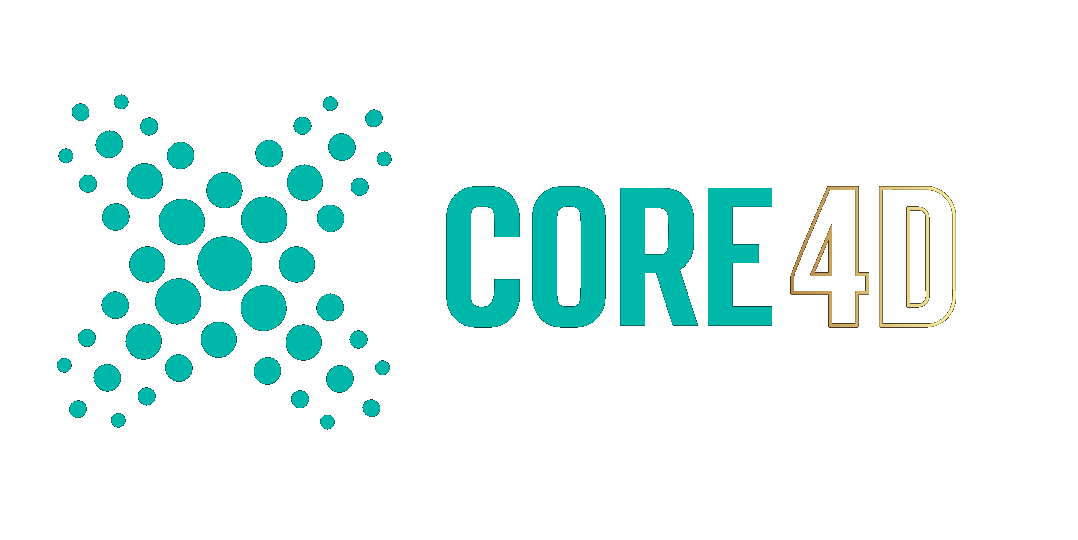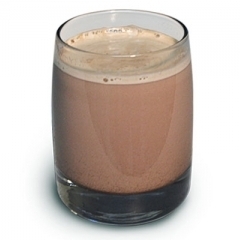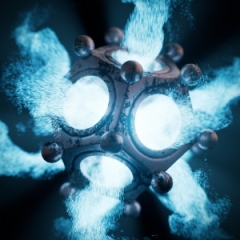All Activity
- Today
-
Bonzod joined the community
-
cvecu joined the community
-
Maybe you make the animation 'flat' and then run it through something else after you have rendered it in order to project it to the right height of the viewer?
-
I have been approached to make a faux 3D set up where a user looks into the screen and has the illusion of looking into the box the screen is mounted on. I can see big problems with this in terms of the angle of the viewer - if a little child looks in and then an adult, they will both got different projections. If I was doing all this in Cinema, I might be tempted to make a box and then put a camera in front of it at the height of the viewer and then render it from there - is that a bit brute force? What would a clever person do with this problem?
-
mabad joined the community
-
Marc joined the community
-
ShaJeLove joined the community
-
Here is a simple nodes setup where modifier takes normals from one mesh and applies it to mesh it is modifying. Selection can be made in selection to indexes mode. Is this what you are after? Normals.c4d
- Yesterday
-
Metallic material, highly reflective. Hollow object or concave with internal self reflections... camera looking in. During testing I turned EVERYTHING off in dome light Details but the internal reflections persist!?!?! (sorry, up-to-date Redshift and C4D) Am I missing something or could this be a bug? InternalReflectionsTester.c4d
-
Hello! Here's a scene file. I'm using Hot4D, so im not sure if you'll be able to see the wave. But the theory applies the same without it This is the layer noise i'm trying to rotate WaveTestScene_001.c4d
- Last week
-
astro joined the community
-
A P started following How to rotate a noise displacer?
-
Hello! I've been dealing with this for a couple of hours, and it seems so easy yet so hard. Does anyone know how can I rotate a noise that's in a displacer effector? As you can see in my image I want the noise to be angled so it's not fake looking and linear, but the noise doesn't have any transform attributes. Would appreciate any help! Thank you!
-
A P joined the community
-
Schnoelkl joined the community
-
wildnick joined the community
-
CommanderPho joined the community
-
now for the whole gang doing a dance routine! Still don't know why the fur on Bella (second right) has that weird shadow on it… Anyone? Chicken Dance HB v01.mp4
-
Hi, I have permanent licenses for Cinema 4D (R21) and Redshift that I'm looking to sell. Maxon has a process for this where I submit both parties' info, they confirm the transaction with both sides and then move the license to the buyer's account permanently. I've posted this on ShareGrid to handle the payment so that there is a verifiable third party involved. Maxon support told me it might take 1-2 days to clear the support ticket once we submit the info, but both sides would be able to confirm the status as it progresses through their system. I would handle the transfer fees for the two licenses. https://www.sharegrid.com/newyork/l/404840-permanent-cinema4d-r21-redshift-licenses If you're interested, let me know. Thanks
-
Found the solution! It's a bit unintuitive to set up, but works so far at least for a relatively simple setup like this. But, as I feared there is NO way to do this with the SDS intact. It just has to be converted. Maybe this is possible with scene nodes, but I don't know how those work so this is my solution for now. Convert your target and source mesh if it's an SDS. Click on the Phong Tag of each of them and press "Create Normal Tag". This will essentially "freeze" your Normals on the mesh in the current state, as the Normal Tag overrides the Phong Tag as long as it exists. Click on the Normal Tag on your target mesh and enable "Fields" in the "Transfer" menu. Switch to the "Fields" tab on the tag. You should see a "Freeze" layer. This layer is basically the current normals on your mesh as the Normal Tag saved it. Do not delete this, or you will lose all your normals and your mesh will appear black. Drag the Normal Tag from your source mesh into the fields list. You should see your normals change. Click on the "Variable Field Tag" layer you just created and switch to the "Layer" tab. Change "Mode" to "Average". This essentially takes your target normals and changes them so they are an average of all the source mesh normals that are within a specified radius. You can adjust how large this radius is with the "Radius" setting. You want this relatively low, so only a couple of points around your "transition area" are involved. You might not want a smooth transition either, depending on your usecase. In that case you can disable "Distance Falloff" This entire setup should look something like this: So what does this do? Essentially we are keeping our original normals (which is the "Freeze" layer) and are then overwriting the parts that we actually want via the "Variable Tag Field" layer. If this is set to anything other than "Average" it will not work as intended for this workflow. Averaging is exactly what we want here for a smooth transition. Now let's assume we only want ONE part of the mesh actually having this transition. For this we need to add a little more to the fields. We can, for example, add a polygon selection as a mask below the "Variable Tag Field" layer. Then a polygon selection like this: ... can mask out the transition to only happen at the base, not at the thin part: You can add another "Freeze" layer after all of this to "save" this setup and delete the source object, so you don't have to keep unnecessary objects in your scene. So yeah, this is a bit more involved than in Blender and unfortunately not at all as convenient and most importantly not as non-destructive as in Blender, but at least it's possible. Maybe something Maxon can work on in the future 😉 I think this should be part of the Normal Editing toolset with a couple of clicks instead of... this.
-
dasfrodo started following Transferring Normals between Meshes
-
So in Blender there is this very handy modifier called "Data Transfer" that makes it possible to dynamically transfer normals between different meshes. What would you need this for? Well, for example something like this: Meshes before transfer Meshes after transfer Note that these are EXACTLY the same meshes as before. It is not connected to the main body in any way, it's just the normals that were transferred for the row of points that touches the main body. Now in THEORY this is possible in C4D as well, in multiple ways, but I can't get it quite to work. I also tried exporting the mesh from Blender and importing it again in C4D, but that somehow breaks the shading and it doesn't look nearly as good as in Blender. Technique 1: VAMP Create Normal Tag on source mesh Open VAMP Set up Source and Target mesh, tick "Normals" and set "Space" to "Global" Press "Transfer Maps" This transfers the normals as expected, but I CANNOT decide what is transferred and what isn't. It looks like crap when ALL normals are transferred: And even IF you got that to look right: The Normal Tag breaks completely when you add a subdivision surface, so the only option would be to convert the SDS first, then do the normal transfer. This is significantly harder due to the amount of polygons involved though and kind of defeats the purpose of the parametric workflow in C4D. In Blender I could just put the SDS above the Data Transfer Modifier in the stack. Technique 2: Normal Editor This kind of works, but not really. As far as I can tell I can just adjust the normals of everything I selected in ONE direction. This works for the outer ring that touches the thick part of the model, but not for the part in front that wraps around the cylinder. The thick part just points in one direction, while the cylinder points in different directions. To add to that you have to somehow get the transitions between the normals to look great, which I just could not get to look right. And again, this breaks when SDS is involved, as the normals from the Normal Tag are ignored by the SDS. Technique 3: Transfer Attributes This is I think the best solution. You can transfer the normals between meshes via the attribute transfer function that is relatively new I think. The problem here is that I cannot seem to "mask" the transfer to only some points. It seems like the fields are acting as a value for the normals instead of being a mask for the value transfer. This is what I mean: It works JUST like the VAMP Normals transfer, just that it's "parametric" which is exactly what I want. But I cannot seem to restrict the transfer to only certain parts of the mesh. Also, of course, this breaks again when an SDS is involved, but I could at least have my normal transfer parametric after converting the SDS that way. If somebody could figure out how that works, if it's possible at all, that would be greatly appreciated 🙂 Stripped down Scene File is attached. Transfer.c4d
-
Yes, there have been a few comments / reports about that. Apparently this is mainly an issue when a whole load of files were added to AB in last session, so you shouldn't see it every time hence, until you add some more. Furthermore if we find it is really irritating us, we can disable AI in the Asset Browser tab in Prefs. CBR
- Earlier
-
Anyone else experiencing slow start ups with 2025.3.1? I manually added about 50 shaders from GSG Studio app into the Asset Browser yesterday over the course of a couple hours and it was so bad that I had to reboot because the system became unstable. After restarting C4D it still took about 3 hours of letting C4D process for it to be stable. When I rebooted today then loaded C4D I had a good 10 minute wait while it was doing "Speedup Asset Search" and "AI is analyzing assets". Should we not be using the Asset Browser for anything over a handful of extra assets since Maxon keeps loading their own "Maxon One" assets? Is this one of those cases where a feature was introduced but we shouldn't use it for a couple releases till it becomes stable? I'm referring to AI as I see there's a way to toggle it off.
-
Couple of animation tests on two of my characters using hair. Problem I seem to have on Witchy Peg is that even though I have added a collider to the head and hat, the hair still goes through them. Same with Hannah Bannah the hair goes through her face… Not sure why? Hannah Leap Test v01.mp4 Peg Gangnam HB v01.mp4
-
Oh, I see, you would need essentially double constraint, that looks quite difficult. Are the nulls always on mesh surface? Essentially transforming any null or mesh itself should transform whole setup, right?
-
zeden started following C4D and Redshift June update.
-
Great work! Looks impressive considering the current state of the system.



